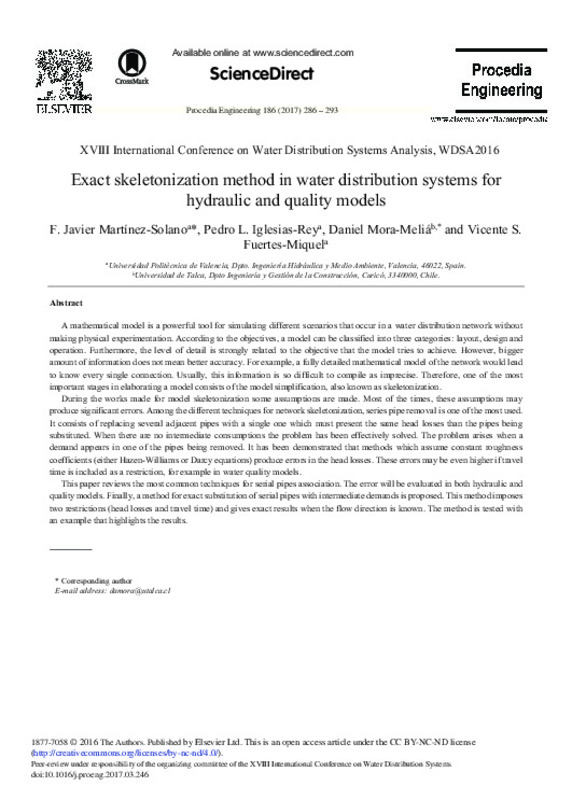JavaScript is disabled for your browser. Some features of this site may not work without it.
Buscar en RiuNet
Listar
Mi cuenta
Estadísticas
Ayuda RiuNet
Admin. UPV
Exact skeletonization method in water distribution systems for hydraulic and quality models
Mostrar el registro completo del ítem
Martínez-Solano, FJ.; Iglesias Rey, PL.; Mora Meliá, D.; Fuertes-Miquel, VS. (2017). Exact skeletonization method in water distribution systems for hydraulic and quality models. Procedia Engineering. 186:286-293. https://doi.org/10.1016/j.proeng.2017.03.246
Por favor, use este identificador para citar o enlazar este ítem: http://hdl.handle.net/10251/100665
Ficheros en el ítem
Metadatos del ítem
| Título: | Exact skeletonization method in water distribution systems for hydraulic and quality models | |
| Autor: | ||
| Entidad UPV: |
|
|
| Fecha difusión: |
|
|
| Resumen: |
[EN] A mathematical model is a powerful tool for simulating different scenarios that occur in a water distribution network without
making physical experimentation. According to the objectives, a model can be classified ...[+]
|
|
| Palabras clave: |
|
|
| Derechos de uso: | Reconocimiento - No comercial - Sin obra derivada (by-nc-nd) | |
| Fuente: |
|
|
| DOI: |
|
|
| Editorial: |
|
|
| Versión del editor: | https://doi.org/10.1016/j.proeng.2017.03.246 | |
| Título del congreso: |
|
|
| Lugar del congreso: |
|
|
| Fecha congreso: |
|
|
| Código del Proyecto: |
|
|
| Agradecimientos: |
|
|
| Tipo: |
|









